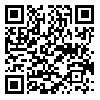Volume 31, Issue 3 (Summer 2023)
Avicenna J Nurs Midwifery Care 2023, 31(3): 227-235 |
Back to browse issues page
Ethics code: IR.UMSHA.REC.1401.030
Download citation:
BibTeX | RIS | EndNote | Medlars | ProCite | Reference Manager | RefWorks
Send citation to:



BibTeX | RIS | EndNote | Medlars | ProCite | Reference Manager | RefWorks
Send citation to:
Khodavisi M, Cheraghiyan S, Amini R, Tapak L. The Effect of Health Belief Model Education on COVID-19 Preventive Behaviors in Nurses Working in Corona Wards of Farshchian Sina Hospital, Hamadan, 2022. Avicenna J Nurs Midwifery Care 2023; 31 (3) :227-235
URL: http://nmj.umsha.ac.ir/article-1-2496-en.html
URL: http://nmj.umsha.ac.ir/article-1-2496-en.html
1- Department of Community Health Nursing, Chronic Diseases (Home Care) Research Center, Hamadan University of Medical Sciences, Hamadan, Iran
2- Department of Nusing and Miwifery, Hamadan University of Medical Sciences, Hamadan, Iran ,shimacheraghiyan332@gmail.com
3- Chronic Diseases (Home Care) Research Center, Department of Community Health Nursing, Faculty of Nursing and Midwifery, Hamadan University of Medical Sciences, Hamadan, Iran
4- Department of Biostatistics, Faculty of Public Health, Hamadan University of Medical Sciences, Hamadan, Iran
2- Department of Nusing and Miwifery, Hamadan University of Medical Sciences, Hamadan, Iran ,
3- Chronic Diseases (Home Care) Research Center, Department of Community Health Nursing, Faculty of Nursing and Midwifery, Hamadan University of Medical Sciences, Hamadan, Iran
4- Department of Biostatistics, Faculty of Public Health, Hamadan University of Medical Sciences, Hamadan, Iran
Abstract: (3265 Views)
Background and Objective: This study aimed to investigate the effect of education based on the health belief model on the COVID-19 preventive behaviors in nurses working in the Corona wards of Farshchian Sina Hospital, Hamadan, Iran, in 2022.
Materials and Methods: This semi-experimental two-group study was conducted based on the pretest-posttest design with a control group. Initially, the nurses were classified and 70 cases from each class were randomly assigned into two intervention and control groups. In the intervention group, an educational program including the health belief model structures was used in 45-min three instructional sessions. Finally, after a month, a final evaluation was conducted, and a posttest was administered using the initial questionnaire. The collected data were analyzed using SPSS (latest version) software through paired t-test, independent t-test, and ANCOVA at the significance level of 95%.
Results: Based on the paired t-test results, the mean scores of the nurses' awareness (P=0.02), perceived severity (P=0.000), perceived benefits (P=0.000), perceived barriers (P=0.006), self-efficacy (P=0.008), performance guide (P=0.002), and preventive behaviors (P=0.007) showed a statistically significant difference in the interventional group before and after the intervention.
Conclusion: The present educational intervention based on the health belief model has significantly improved the knowledge and preventive behavior of nurses towards COVID-19. Therefore, healthcare professionals and public health experts can use the health belief model to develop programs and interventions to help prevent health problems, encourage therapeutic behaviors, and support behavior change. It is recommended that instructional courses based on the health belief model be held for nurses working in the wards related to COVID-19 because they are at a higher risk of contracting COVID-19.
Materials and Methods: This semi-experimental two-group study was conducted based on the pretest-posttest design with a control group. Initially, the nurses were classified and 70 cases from each class were randomly assigned into two intervention and control groups. In the intervention group, an educational program including the health belief model structures was used in 45-min three instructional sessions. Finally, after a month, a final evaluation was conducted, and a posttest was administered using the initial questionnaire. The collected data were analyzed using SPSS (latest version) software through paired t-test, independent t-test, and ANCOVA at the significance level of 95%.
Results: Based on the paired t-test results, the mean scores of the nurses' awareness (P=0.02), perceived severity (P=0.000), perceived benefits (P=0.000), perceived barriers (P=0.006), self-efficacy (P=0.008), performance guide (P=0.002), and preventive behaviors (P=0.007) showed a statistically significant difference in the interventional group before and after the intervention.
Conclusion: The present educational intervention based on the health belief model has significantly improved the knowledge and preventive behavior of nurses towards COVID-19. Therefore, healthcare professionals and public health experts can use the health belief model to develop programs and interventions to help prevent health problems, encourage therapeutic behaviors, and support behavior change. It is recommended that instructional courses based on the health belief model be held for nurses working in the wards related to COVID-19 because they are at a higher risk of contracting COVID-19.
Type of Study: Original Research |
Subject:
Nursing
Received: 2022/10/13 | Accepted: 2023/02/15 | Published: 2023/08/21
Received: 2022/10/13 | Accepted: 2023/02/15 | Published: 2023/08/21
Send email to the article author
| Rights and permissions | |
 |
This work is licensed under a Creative Commons Attribution-NonCommercial 4.0 International License. |







 gmail.com
gmail.com